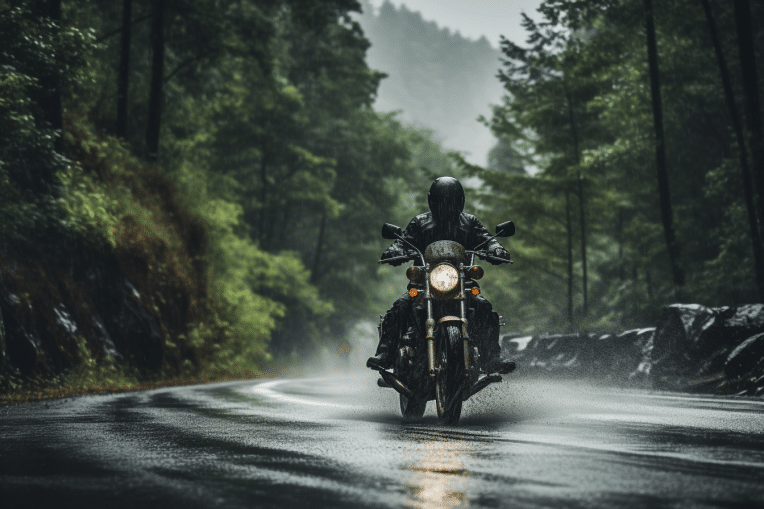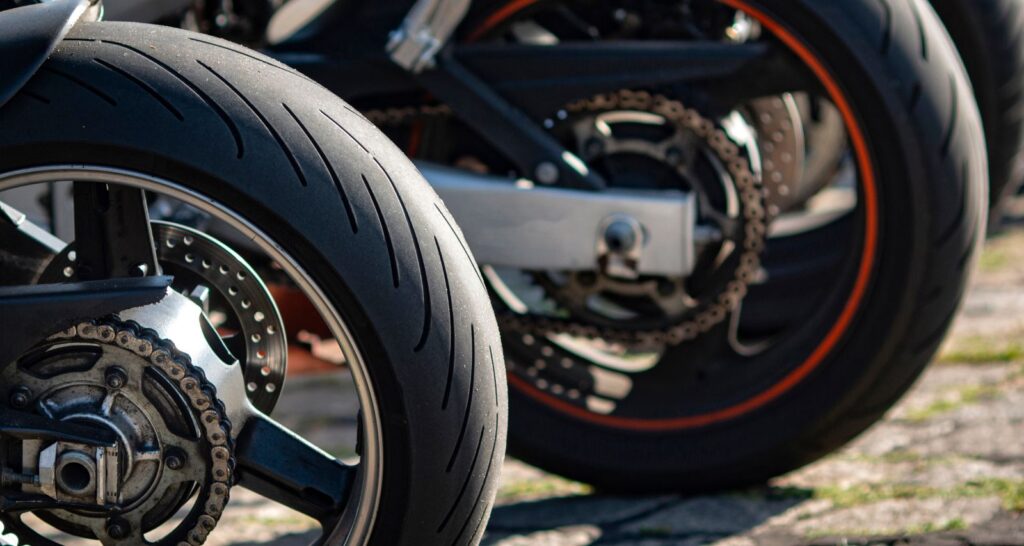Motorcycling in the rain can provide an invigorating experience, but it comes with its own set of challenges and risks. Ensuring safety is paramount when the skies open up, making it essential to be well-prepared.
Rainy day riding involves the activity of operating a motorcycle in wet or rainy weather conditions. It’s a unique subset of motorcycling that comes with its own set of challenges and considerations due to the presence of rain, which can make road surfaces slippery, reduce visibility, and introduce other potential hazards. Riding in the rain requires specific techniques, safety precautions, and appropriate gear to ensure the rider’s safety and maintain control of the motorcycle in adverse weather conditions.
In this comprehensive guide, we’ll explore the key aspects of rainy day motorcycle riding, emphasizing safety first tips.
Pre-Ride Preparations
1. Check the Weather Forecast and Road Conditions
Before hitting the road, always check the weather forecast. Rain can be unpredictable, and knowing what to expect is crucial. Additionally, take a look at road conditions, especially if you’re planning a long ride. Be prepared for any weather-related surprises.
2. Motorcycle Maintenance
Your motorcycle must be in top condition when riding in the rain. Ensure the following:
- Tires: Check tire treads and pressure. Good traction is essential.
- Brakes: Verify that your brakes are functioning properly and have sufficient pad life.
- Lights: All your lights, including headlights, taillights, and turn signals, should be in working order.
3. Gear Selection
Investing in the right gear can make all the difference in rainy day riding. Equip yourself with:
- Rain Gear: A waterproof riding suit or rain jacket and pants will keep you dry.
- Helmet with a Face Shield or Goggles: To maintain visibility in the rain.
- Non-Slip Gloves: Ensure a secure grip on wet handlebars.
- Waterproof Boots: Keep your feet dry and maintain good control.
Riding Techniques
1. Slowing Down and Increasing Following Distance
In wet conditions, it takes longer to come to a stop. Reduce your speed and increase your following distance to allow for safer braking.
2. Smooth and Gradual Braking
Apply the brakes smoothly and progressively. Sudden braking can cause skids and loss of control on slippery roads.
3. Using Both Brakes Judiciously
Utilize both front and rear brakes but with moderation. The front brake provides most of the stopping power but requires caution in wet conditions.
4. Cornering in the Rain
- Leaning and Counter-Steering: Maintain a stable posture and lean into the turns gradually. Use counter-steering to maintain control.
- Avoiding Painted Lines and Metal Surfaces: These can be extremely slippery when wet, so steer clear of them.
5. Avoiding Sudden Maneuvers
Sudden maneuvers, like quick lane changes or sharp turns, are riskier in the rain. Plan your movements in advance.
6. Staying Visible to Other Road Users
Visibility is crucial when riding in the rain. Use your headlights and wear reflective gear to ensure that other motorists can see you clearly.
7. Watching Out for Hydroplaning
Beware of hydroplaning, a situation where your tires lose contact with the road due to a layer of water. To prevent hydroplaning, maintain a steady speed and avoid sudden acceleration.
Visibility and Lighting
1. Proper Use of Headlights
Keep your headlights on, even during daylight hours. This increases your visibility to other drivers.
2. Reflective Gear and Clothing
Wearing reflective clothing and accessories enhances your visibility further, reducing the chances of other motorists not seeing you in rainy conditions.
3. Keeping Your Visor or Face Shield Clear
Fogging can be a major issue when it’s raining. To prevent it, keep your visor or face shield clean and consider using an anti-fog treatment or a Pinlock system if your helmet supports it.
4. Anti-Fog Measures for Helmets
Invest in a quality helmet with proper ventilation to minimize fogging. Helmets with Pinlock visors are an excellent choice for rainy conditions.
Road Conditions
1. Avoiding Standing Water and Puddles
Avoid riding through deep puddles or standing water. You can’t be sure of what lies beneath, and it might conceal potholes or other hazards.
2. Recognizing and Navigating Slippery Road Surfaces
- Oil Residue: Be extra cautious at intersections where oil residue can mix with rainwater, making the road even slicker.
- Painted Lines and Metal Surfaces: Avoid sudden braking or turning on these surfaces, as they are particularly slippery in the rain.
3. Understanding the First Rain After a Dry Spell
The first rain after a dry spell can bring up accumulated oil and debris from the road, making it especially treacherous. Exercise caution during these conditions.
4. Gravel and Debris Awareness
In rainy weather, road debris can become more slippery. Keep an eye out for gravel, fallen leaves, and other hazards that can compromise your grip.
Riding in a Group
1. Maintaining a Safe Distance
Keep a safe following distance from the rider in front of you. In rainy conditions, this buffer allows more time to react and maneuver.
2. Communication Signals and Hand Gestures
Develop a set of communication signals or hand gestures for your riding group. Clear communication is crucial, especially when visibility is reduced.
3. Group Riding Etiquette in the Rain
Practice staggered formations to avoid riding in the spray from the motorcycle in front. Keep group speeds reasonable and maintain a disciplined riding formation.
Emergency Situations
1. Dealing with Skids and Slides
If your motorcycle starts to skid or slide, stay calm and gently ease off the throttle. Keep the handlebars straight and let the bike regain traction.
2. What to Do If You Start to Hydroplane
If you feel your motorcycle hydroplaning (losing traction due to a layer of water), gradually close the throttle, and keep a steady course. Do not make sudden movements.
3. Knowing When to Pull Over
If the rain becomes too heavy, visibility is compromised, or you feel unsafe, find a safe spot to pull over and wait for the storm to pass. Your safety is the top priority.
4. Handling Mechanical Issues in the Rain
If you experience mechanical issues in the rain, be cautious and try to make minor roadside repairs. If needed, call for assistance to ensure your safety.
Post-Ride Maintenance
After a rainy ride, it’s important to take care of your motorcycle and gear to ensure they remain in good condition.
1. Drying and Cleaning the Motorcycle
Clean and dry your motorcycle to prevent rust and corrosion. Pay special attention to the chain, brakes, and exposed electrical connections.
2. Gear Maintenance
Properly clean and store your rain gear to ensure it’s ready for your next wet ride.
3. Inspecting for Damage
Check your motorcycle for any damage that might have occurred during the ride, such as scrapes or dents.
4. Storing Gear and Clothing
Hang your gear and clothing to dry thoroughly before storing them to prevent mildew and odors.
Conclusion
Riding a motorcycle in the rain can be challenging but immensely rewarding. Remember that safety should always be your top priority. By following the tips and techniques outlined in this guide, you can enjoy the thrill of rainy day riding while minimizing the associated risks. Continuous learning and practice in inclement weather conditions will make you a more confident and skilled wet-weather adventure to the fullest. Stay safe, stay dry, and ride on!




